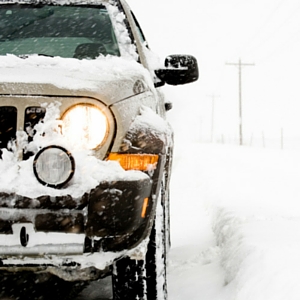When to Use 4-Wheel Drive

If you've ever been stuck in the snow in your car, you might wish you had 4-wheel drive (4WD) to help you out. Even if your vehicle is already equipped with it, do you know when to use it?
Obviously, you don't need to use 4WD on a beautiful day, but what about when there's snow and ice? There are conflicting reports, but generally speaking, any time the roads are slick—whether it's from ice, snow or mud—you need more traction. It's also good to have if you're driving on unpaved roads, off-roading or driving on uneven surfaces like a muddy field, sand or loose gravel.
4-Low or 4-High?
Some vehicles with 4 wheel drive give you the option of choosing 4-Low or 4-High, which can be confusing. 4-Low (4L) creates more torque at slower speeds to push your vehicle through deep snow, thick mud, sand, etc., as well as driving up very steep inclines. This comes in handy if, for instance, the snow on your driveway is deep and you don't have time to shovel it before you go to work. 4L can get you through it, then when you get to roads that have already been plowed, you can switch to 4-High (4H). You need to switch because 4L isn't meant for speeds faster than 10 MPH.
4H is meant for driving on snowy, slippery roads rather than deep snow or mud because instead of providing the power you need to push through, it provides the traction you need on slick roads. 4H allows you to drive at faster speeds than 4L, but you should never drive excessively fast in slippery conditions. If you do, you're setting yourself up—and maybe others as well—for an accident. Winter is just around the corner, so now is a good time to brush up on your winter driving skills whether you have 4WD or not.
